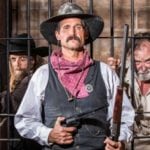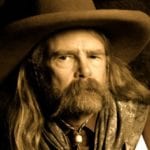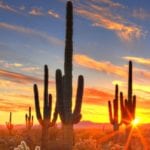 Humans
Humans  Humans
Humans  Animals
Animals 10 Animals That Humiliated and Harmed Historical Leaders
 History
History 10 Most Influential Protests in Modern History
 Creepy
Creepy 10 More Representations of Death from Myth, Legend, and Folktale
 Technology
Technology 10 Scientific Breakthroughs of 2025 That’ll Change Everything
 Our World
Our World 10 Ways Icelandic Culture Makes Other Countries Look Boring
 Misconceptions
Misconceptions 10 Common Misconceptions About the Victorian Era
 Mysteries
Mysteries 10 Strange Unexplained Mysteries of 2025
 Miscellaneous
Miscellaneous 10 of History’s Most Bell-Ringing Finishing Moves
 History
History 10 Great Escapes That Ended Right Back in Captivity
 Humans
Humans 10 Everyday Human Behaviors That Are Actually Survival Instincts
 Animals
Animals 10 Animals That Humiliated and Harmed Historical Leaders
 History
History 10 Most Influential Protests in Modern History
Who's Behind Listverse?

Jamie Frater
Head Editor
Jamie founded Listverse due to an insatiable desire to share fascinating, obscure, and bizarre facts. He has been a guest speaker on numerous national radio and television stations and is a five time published author.
More About Us Creepy
Creepy 10 More Representations of Death from Myth, Legend, and Folktale
 Technology
Technology 10 Scientific Breakthroughs of 2025 That’ll Change Everything
 Our World
Our World 10 Ways Icelandic Culture Makes Other Countries Look Boring
 Misconceptions
Misconceptions 10 Common Misconceptions About the Victorian Era
 Mysteries
Mysteries 10 Strange Unexplained Mysteries of 2025
 Miscellaneous
Miscellaneous 10 of History’s Most Bell-Ringing Finishing Moves
 History
History 10 Great Escapes That Ended Right Back in Captivity
10 Wild Lawmen Of The Old West
The Old West created a lot of legends. In fact, if there’s one thing it was consistently good at, it was taking outlaws and turning them into icons. Men like Jesse James, Billy the Kid, and Butch Cassidy became part of American culture though they were violent criminals.
Then again, we could also look at the other side of the coin. In a time of lawlessness, there were lawmen who commanded respect and weren’t afraid to stand up to outlaws. In the process, they created the archetype of the Western hero.
10Pat Garrett
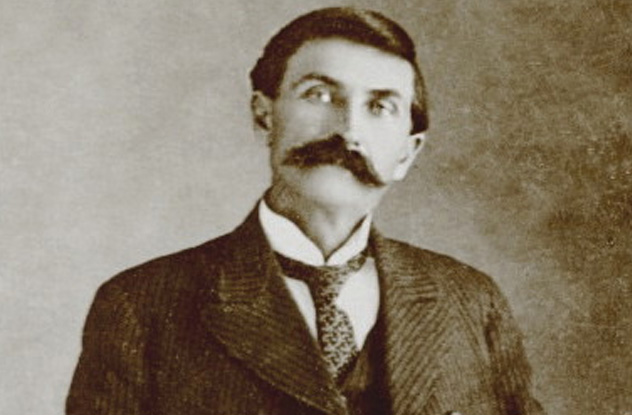
Sheriff Pat Garrett secured his fame when he gunned down one of the biggest outlaws of the West, Billy the Kid. Garrett became the Lincoln County Sheriff in 1880. This was just after the end of the Lincoln County War, a bloody feud with a lot of gunfights.
According to legend, Garrett and William Bonney (Billy the Kid) had an amicable relationship initially. In fact, the two of them were even supposedly often seen together gambling in the saloon. However, as soon as Garrett became sheriff, he made it his mission to bring in Billy the Kid. The $500 bounty just placed on Bonney’s head probably helped, too.
Pat Garrett eventually became ostracized because many thought that he unfairly gunned down Bonney in cold blood. However, Garrett earlier captured Billy the Kid fair and square.
Garrett and his deputies found Billy and his gang, killed two of his men in the ensuing gunfight, brought Bonney to stand trial, and was declared a hero. Bonney was found guilty and was sentenced to hang in Lincoln. However, while in jail, Billy the Kid managed to kill two guards and escape.
Garrett tracked down Bonney again near Fort Sumner, and this time, he didn’t take any chances. He waited in darkness for Bonney to arrive home. When he did, he shot Billy the Kid straight in the heart. These actions hurt Garrett’s reputation, and he lost the reelection for sheriff.
9Bill Tilghman
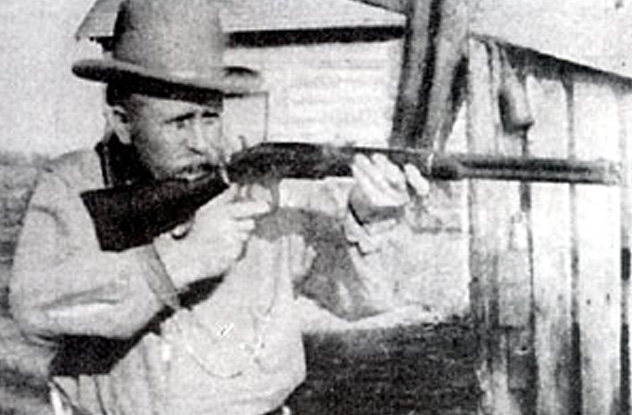
It’s possible that Bill Tilghman had a more prolific career as a Western lawman than anyone else. He started in 1875 at the age of 21 when he became deputy sheriff at the request of famed lawman Bat Masterson. Tilghman eventually died in 1924, aged 70, still in the line of duty. During that long career, Tilghman won the respect of many gunslingers like Wyatt Earp, Virgil Earp, the Mastersons, and Wild Bill Hickok. In fact, Bat Masterson claimed that Tilghman was “the greatest of us all.”
Tilghman developed the reputation of a man who only resorted to violence when it was absolutely necessary. This tactic never proved to be a hindrance, as Tilghman supposedly claimed more reward money than any other Old West lawman.
Tilghman and two other marshals, Heck Thomas and Chris Madsen, were known as the Three Guardsmen due to their relentless pursuit of the most dangerous gangs in Oklahoma. Tilghman would be particularly remembered for his apprehension of Bill Doolin, one of the most violent outlaws of his day. Doolin was originally part of the Dalton Gang and then went on to form his own Doolin Gang, also known as the Wild Bunch. Despite the danger, Tilghman engaged Doolin in a standoff and convinced him to surrender. Doolin later told a reporter, “If it had been anyone else, I would have pulled my gun.”
8William Davis Allison
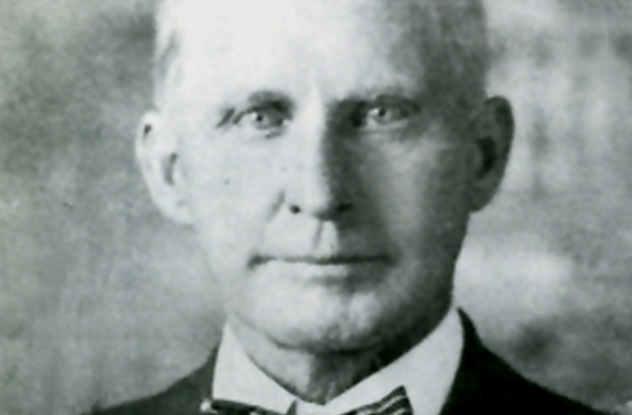
Career lawman William Davis Allison served six terms as a Texas sheriff starting at the age of 27 in 1888. In the process, he became the youngest sheriff in Texas history. After his long tenure as sheriff, Allison served as an Arizona Ranger, a Texas Ranger, and then became a detective, so it’s fair to say that Dave Allison was involved in law enforcement for most of his life. His career earned him the admiration of many prominent figures, most notably future general George Patton, who said Allison was “the most noted gunman here in Texas.”
Allison was known for his fearlessness but also had a dark side, as he was quite a bad gambler. His most notable act as a lawman was probably also his most controversial. In 1915, he led the posse that tracked down and killed Pascual Orozco, the Mexican revolutionary and outlaw. Orozco still had many supporters, and there was even suspicion that he might have been gunned down in cold blood, although all involved were subsequently acquitted of all charges.
Later on in life, Allison became a detective. While working for the Texas Cattle Raisers Association, Allison built a case against two cattle rustlers in Seminole, Texas. On the night before the trial, those two outlaws barged into the hotel where Davis was staying and gunned him and his partner down.
7John Hicks Adams
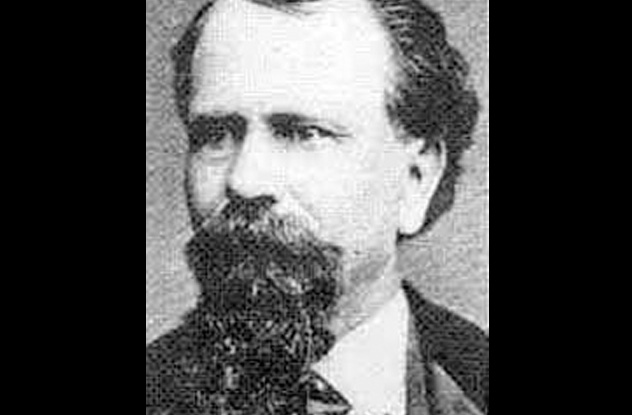
Another career lawman, John Hicks Adams first came to California as a forty-niner during the Gold Rush. When he finally settled down on a farm near Gilroy, Adams went into politics. He was elected sheriff when the previous sheriff died and somebody had to finish his term. During this time, Adams learned of a notorious group of Confederates called Captain Ingram’s Partisan Rangers, who had committed various crimes in Santa Clara County. Adams quickly formed a posse and pursued the gang, determined to bring them to justice. This led to several gunfights, including one where Adams’s posse had surrounded a small house where most of the rangers were holed up. All of the rangers were captured or killed in the gunfight that ensued.
The way Adams dispatched Captain Ingram’s gang ensured his reelection as sheriff for four more terms in Santa Clara County. During that time, Adams again formed a posse to track a group of Confederate outlaws, these ones known as the Mason-Henry Gang. Significantly more bloodthirsty than Ingram’s group, Mason and Henry were sensationalized by the media as “The Copperhead Murderers.” They had the habit of not only committing robberies but also murdering people just for supporting the Union. Adams was close to getting the gang on several occasions, but they always managed to slip away. However, Adams’s relentless pursuit forced them to leave southern California altogether and meet their demise in other parts of the state.
6John Barclay Armstrong
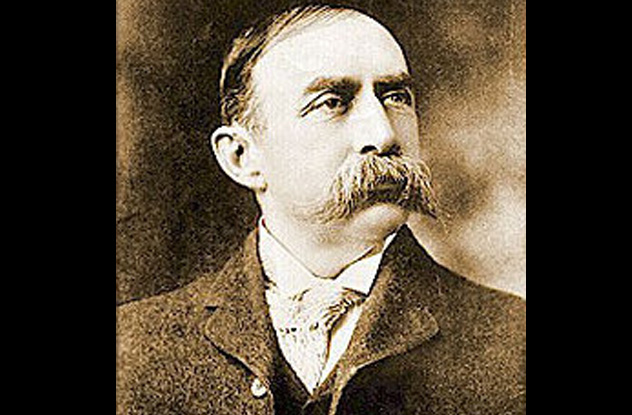
Unlike most men on this list, John Armstrong died peacefully at home instead of in a violent gunfight. He also garnered most of his glory as a Texas Ranger before becoming a US marshal in Willacy County. He served in a special force branch of the Texas Rangers as second-in-command to Captain Leander McNelly. This earned him the nickname “McNelly’s bulldog.” When McNelly retired in 1877, the squad disbanded, and Armstrong was promoted.
While a Texas Ranger lieutenant, Armstrong hunted down one of the Wild West’s most dangerous gunmen, John Wesley Hardin. Hardin had been captured once by rangers but escaped, and Armstrong now wanted to investigate despite recovering from a gunshot wound. Armstrong found himself in a train coach in a standoff against Hardin and four of his men. Although at an obvious disadvantage, Armstrong killed one of the men, knocked Hardin unconscious, and disarmed the other three. He then safely escorted Hardin to Texas, where he received 25 years in prison.
Besides this shining moment, Armstrong also helped track down outlaw King Fisher and was part of the posse that killed notorious train robber Sam Bass.
5Harry Wheeler
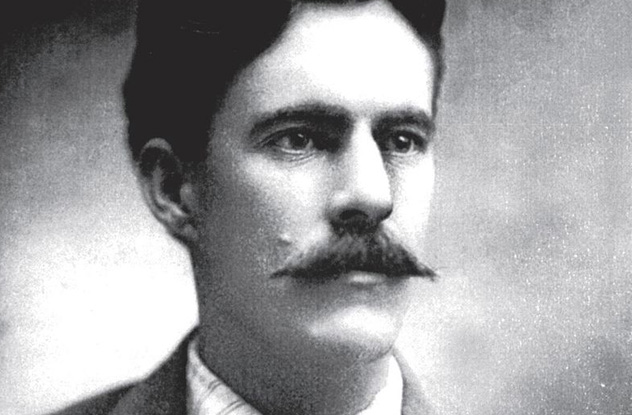
Harry Wheeler was involved in some of the last true Western gunfights. Wheeler’s first gunfight as a ranger came in 1904 in Tucson, Arizona when he was alerted of a robbery taking place in a nearby saloon. It was a classic shoot-out between two men. Wheeler turned out to be the faster gunslinger and, as a result, the one who walked out alive. Just a few years later, Wheeler took part in the Benson Shoot-out against J.A. Tracy. Again, it was a classic gunfight seldom seen outside of Western movies. Each man shot the other, but Tracy died from his wounds while Wheeler made a full recovery.
As a result of Wheeler’s bravery and prowess, he earned a position as Cochise County sheriff. In 1917, Wheeler took part in the Gleeson Gunfight, one of the last shoot-outs of the Old West. Wheeler and his deputy were ambushed in the middle of the night by a gang of smugglers they were tracking down. The gunfight continued until the early hours of the morning, during which Wheeler was the only one who managed to hit a target. Although superior in numbers, the smugglers retreated, perhaps due to the condition of their wounded member, whose fate remained unknown.
4Heck Thomas
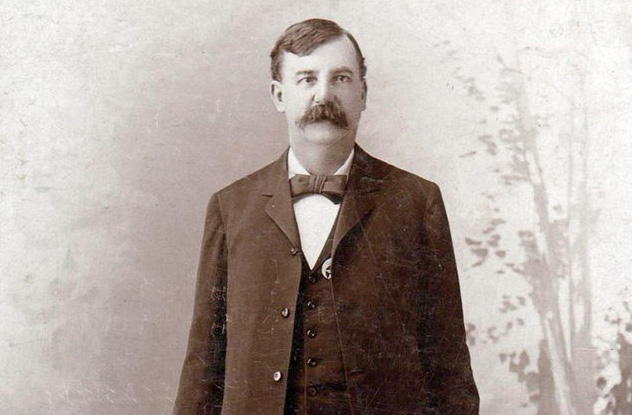
Another member of the aforementioned Three Guardsmen, Henry “Heck” Thomas was surrounded by violence from a young age. In 1862, at the age of 12, he joined his father and uncle in the Civil War, serving as a messenger. When the war was over, his father was made city marshal in Atlanta, and Heck became a police officer.
Thomas moved to Texas, where he became a railroad guard. Here, he encountered one of the most notorious criminals of that era, Sam Bass. Bass and his gang of infamous train robbers terrorized the Texas Central Railroad. A gunfight between the guards and the gang ensued. Heck was injured and the gang got away, but he made sure they left empty-handed by placing decoy packages in the safe.
Heck quickly rose through the ranks, first becoming detective and then deputy marshal in 1886. He started working in Oklahoma, apprehending numerous criminals, including the Purdy Gang.
In 1891, Thomas joined up with Bill Tilghman and Chris Madsen to track down the worst criminals in Oklahoma, forming the Three Guardsmen. Their biggest target was Bill Doolin. The Guardsmen joined a posse in 1893 and fought the Doolin Gang at the Battle of Ingalls. Three deputies were killed (two by Doolin himself), and all but one member of the gang got away. Three years later, Heck got a chance to fight Doolin again and, this time, Bill didn’t make it out alive.
3John Hughes
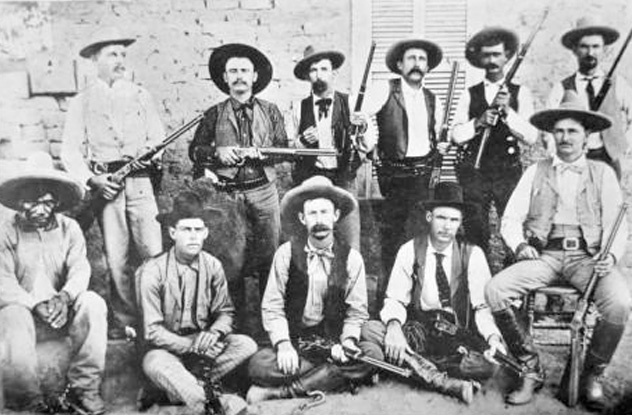
John Hughes never really intended on pursuing the path of a Texas Ranger. He spent his teenage years working as a ranch hand before traveling and living among various native tribes. When it was finally time to settle down, he became a farmer in Liberty Hill, Texas.
This all changed in 1886, when thieves stole his neighbor’s horses. Hughes pursued them and caught up to them in New Mexico. In the ensuing gunfight, Hughes killed two of them, captured the rest, and returned the horses.
Word of Hughes’s exploits spread fast and soon reached renowned Texas Ranger Ira Aten, who asked Hughes’s help in apprehending escaped murderer Judd Roberts. With the deed done (and Roberts dead), Aten convinced Hughes to join the Texas Rangers. He served under Captain Frank Jones as part of the Frontier Battalion, a group that captured outlaws around the Texas-Mexico border.
The battalion was tracking a group of bandits when it unknowingly went into Mexican territory. There, Captain Jones was ambushed and killed, and Hughes assumed leadership. Since they were in Mexico, Hughes knew that no captured bandit could be prosecuted. However, he managed to obtain the names of all bandits involved in the killing of his captain, 18 men in total. He then took his rangers and tracked down every single man on the list, ensuring their demise either in a gunfight or by hanging.
2Seth Bullock
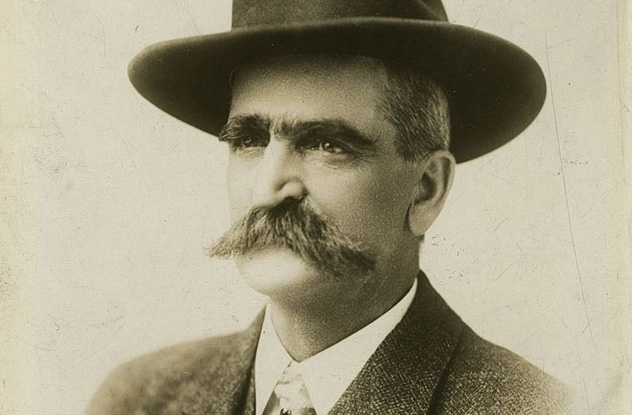
Seth Bullock will be familiar to anyone who watched the TV show Deadwood. Bullock was the inspiration for the main character of the show, bringing order to a lawless town rife with violence, gambling, prostitution, and men who moved there to escape the government.
Before all this, Bullock got involved in politics. At 22, he became a Republican member of the Territorial State of Montana and proposed legislation (later passed) to create the first national park in the country—Yellowstone. In 1873, Bullock became sheriff of Lewis and Clark County and went into business with longtime partner Sol Star. The two of them traveled to Deadwood in 1876.
Unlike in the show, Bullock never became friends with Wild Bill Hickok, as Hickok was murdered the day after Bullock arrived in Deadwood. In fact, it was this event that made the people of Deadwood (mostly the miners) demand some form of law. And that law wasn’t Bullock but a man named Isaac Brown, who was appointed marshal. However, he was soon killed in an ambush. Eventually, Bullock became county sheriff and brought order to Deadwood.
While serving as a Dakota lawman, Bullock befriended Theodore Roosevelt, then a marshal, who held him in very high esteem. Bullock became part of Roosevelt’s Rough Riders and then served as a captain during the Spanish-American War. When Roosevelt became president, he named Bullock US marshal for South Dakota.
1Bat Masterson
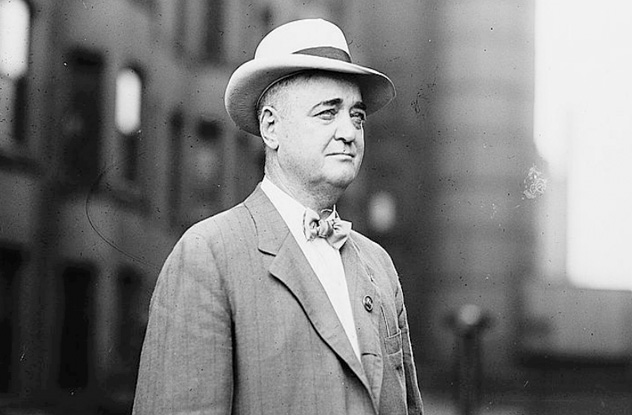
Today, William Barclay “Bat” Masterson is remembered primarily for his close association with Wyatt Earp. The two of them became friends while serving as deputies in Dodge City, Kansas, and Masterson later went on to accompany Earp on many of his adventures.
Masterson’s first gunfight took place in 1876 in Sweetwater, Texas. He was only 22 and was arguing with a soldier over a woman named Molly Brennan. In the ensuing gunfight, both the soldier and Brennan died, and Masterson was injured. Once Bat healed, he decided to become a man of the law.
He joined his brothers, Jim and Ed, who were deputies in the notorious town of Dodge City. It wasn’t long before Bat was elected sheriff of Ford County. In 1878, Bat and his brother Ed were involved in a gunfight with two assailants that left Ed mortally wounded. Bat took down both men, killing one and severely injuring the other.
Masterson’s most legendary gunfight was the Battle of the Plaza in 1881. Prior to the fight, Masterson came to Tombstone, Arizona at the invitation of Wyatt Earp. He received word from Dodge City that two men wanted to kill his brother over a dispute. Bat hopped on the first train there and confronted the men in a gunfight. One of the two and a bystander were shot, but nobody was seriously injured. The gunfight was deemed fair (by Dodge City standards), and Bat was let off with an $8 fine and left Dodge City that same day.
Radu is a history buff with a soft spot for the Old West. Reminisce about the “good ol’ days” on Twitter.
